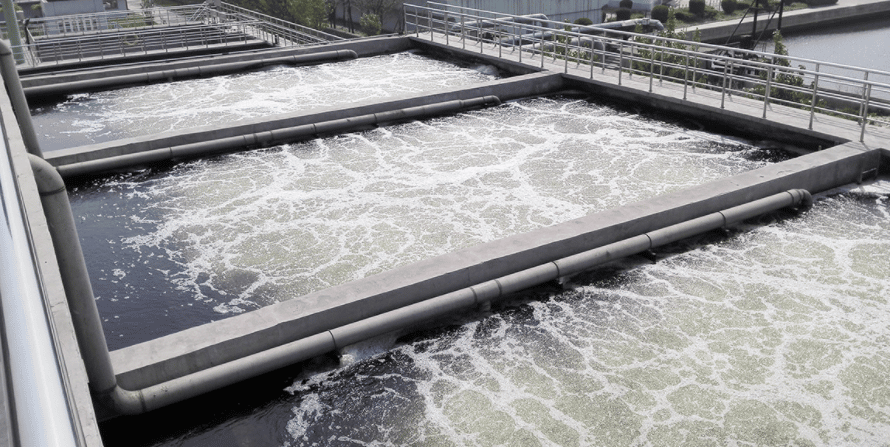What is industrial sludge?
Industrial sludge is a product formed after the treatment of industrial wastewater and refers to the solid, semi-solid or liquid residues generated during the treatment of industrial wastewater in wastewater treatment plants. Industrial wastewater usually contains large amounts of organic and inorganic impurities, sometimes including other harmful substances and non-biodegradable components. As a result, wastewater treatment systems and sludge are complex. It is important to note that industrial sludge does not include the combustion of industrial sludge in incinerators or the grit and screening that occurs during the initial treatment of industrial wastewater.
Industrial sludge treatment process
Industrial sludge treatment process is the mechanism and process of treating wastewater generated by industrial or commercial activities before it is discharged into the environment or reused. The principle of the process is to concentrate impurities into a smaller volume of liquid called sludge. Depending on the nature of the sludge, targeted treatment methods are used.

Types of industrial sludge and treatment methods
3 main types of industrial sludge
- Biological sludge: It is a non-toxic sludge, but has an unpleasant odor. This sludge is used to produce organic fertilizers used for livestock farming. Because these fertilizers are mostly composed of biological sludge, the price will be lower, but the quality is still good.
- Non-hazardous sludge: Also known as microbial sludge, they are produced by industrial wastewater treatment systems. They can be made of wood, plastic, metal, glass and chemicals, as well as other materials generated by industrial, commercial and agricultural sources. They are non-toxic sludge and therefore do not require treatment.
- Hazardous industrial sludge: This is a hazardous sludge and therefore industrial sludge must be collected and treated according to standard procedures before being discharged into the environment This type of sludge often contains many heavy metals that are harmful to health, such as Cu, Mn, Zn, Cd, Pb, Hg, etc., and can be hazardous to human health and the natural environment if not treated properly.
Sources of industrial sludge generation
Sewage treatment and sludge are mainly involved in industrial parks, companies, factories and farms. Specifically, sludge is generated from
- Water treatment system sludge: Generated by domestic water treatment plants.
- Dredging sludge: This is mainly generated during dredging of canal systems, ditch systems, improvement facilities and transportation systems.
- Sludge from wastewater treatment systems: This is one of the common sources of industrial sludge disposal. The process of treating industrial and domestic wastewater generates large amounts of different types of industrial sludge.
- Sludge from wastewater and livestock manure treatment systems: centralized farms and livestock factories produce large amounts of toxic industrial sludge that has a foul odor and affects the environment, etc.
- Sewage sludge from drainage systems: Large institutions or residential areas leave a large layer of sludge after the use process. The regular cleaning of these systems generates a large amount of sludge that needs to be disposed of.
Industries that generate sludge
- Wastewater treatment systems for factories of steel, plastics, paper, paint, textile printing and dyeing, electroplating, semiconductors, etc.
- Domestic wastewater treatment systems for communities, apartment buildings and commercial centers.
- Food production industries such as beer, soft drinks, milk, drinking water, candy, and cookies.
- Sludge and sewage treatment systems in farms and livestock factories.
Industrial sludge treatment should be treated carefully and follow the current standards. Each industry has different principles and treatment processes.
Types of industrial sludge treatment plants
Effluent treatment plants
Large industrial organizations and pharmaceutical plants often use wastewater treatment plants (ETP). Industrial wastewater contains oil and grease, and some also contains toxic substances such as cyanide. Various effluents and contaminants are produced during the manufacturing process of pharmaceuticals.ETPs are used to remove large amounts of grit, contaminants, toxic and non-toxic materials, polymers, etc. ETPs use evaporation and drying methods, as well as other auxiliary techniques such as centrifugation and filtration.
Wastewater treatment plants
This process(WTP) is used for large-scale removal of pollutants from wastewater and domestic sewage. Pretreatment helps to isolate bulky materials accumulated from raw wastewater to avoid clogging of pipes and pumps. The process is accomplished by means of mechanical bar screens. In smaller plants, manually cleaned screens may be used.
Combined wastewater treatment plants
Smaller industries do not have the energy, space or money to set up their own specialized water treatment facilities. Therefore, they rely on the plant’s integrated water treatment system to remove wastewater.
KUOSI, a leading supplier of industrial sludge and waste water treatment equipment and solutions, will help your business develop the best equipment selection and solution after an experienced expert evaluation process. Contact KUOSI now for equipment quotes or to inquire about industry solutions.
